
Park Royal has long been a home for industries associated with the motor car. In the past, these industries made components, batteries, lights, tyres and buses and cars themselves. Today, the industry is based around servicing, preening and pimping the cars people already own.
The result of this industry is that Park Royal is littered with fly-tipped, used tyres (at least one per street).

↑A fly-tipped tyre on Standard Road. A daily occurrence in Park Royal.
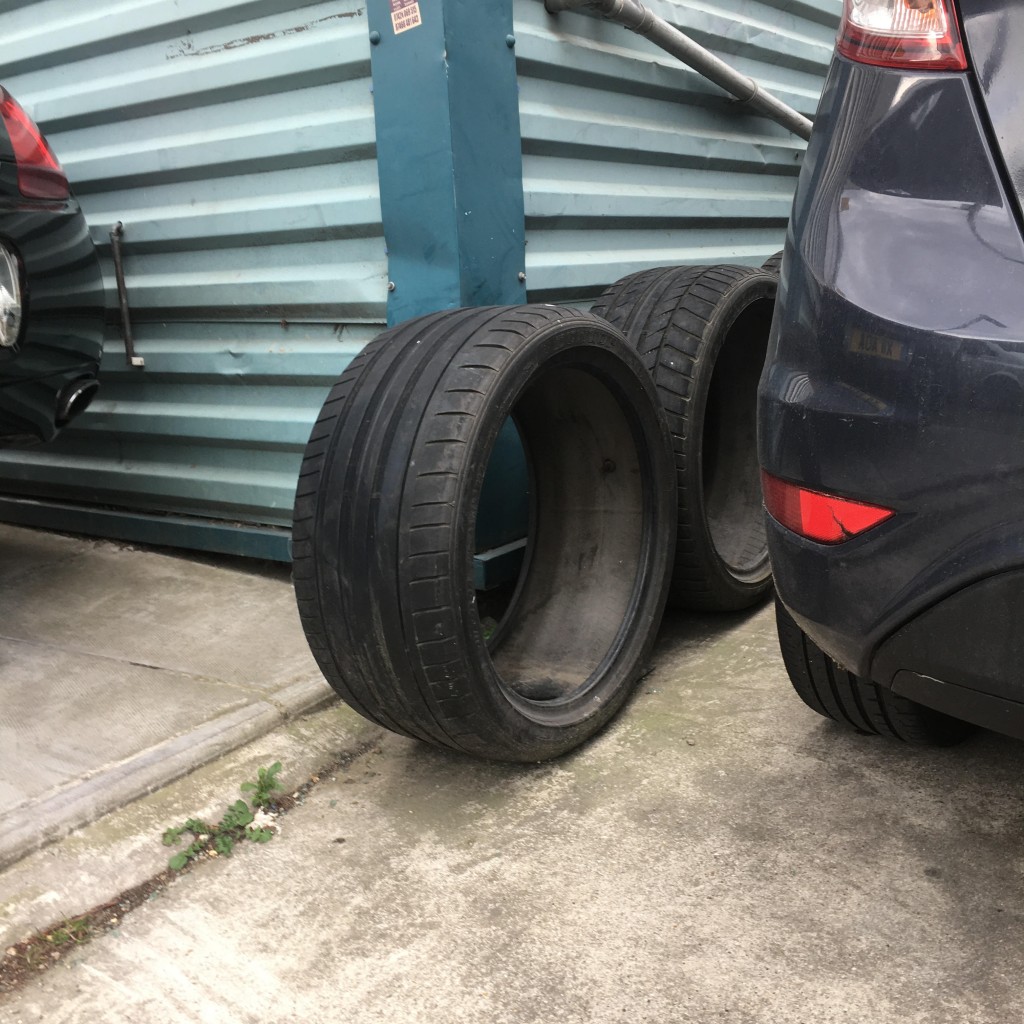
↑Wide tyres = lots of work to skin. Would not recommend.
We heard about people across the Global South – in Kenya and Ethiopia, India and Pakistan, Indonesia and Vietnam, and all across South America – using this resource to make tyre sandals, and decided to try it here too.

↑'Ten Thousand Miler' sandals in Ethiopia, so-named because of how long they last.

↑Maasai Treads, a brand producing tyre sandals in Nairobi, Kenya.

↑Ho Chi Minh sandals, named by American troops fighting in the Vietnam War. These low-tech/low-cost sandals were made by the Vietcong. Many Americans found them preferable to their military boots in the hot and wet climate.

↑Tyre Sandals in Peru.
However, whereas in these places people just cut through the tyres with a sharp knife, European tyres are reinforced with steel belts. We tried various methods to overcome this (including hacksaws), but in the end settled on slicing the outside layer off each tyre with a Stanley knife. This took A Long Time.

↑One of the young people skins a tyre. Excellent stance.
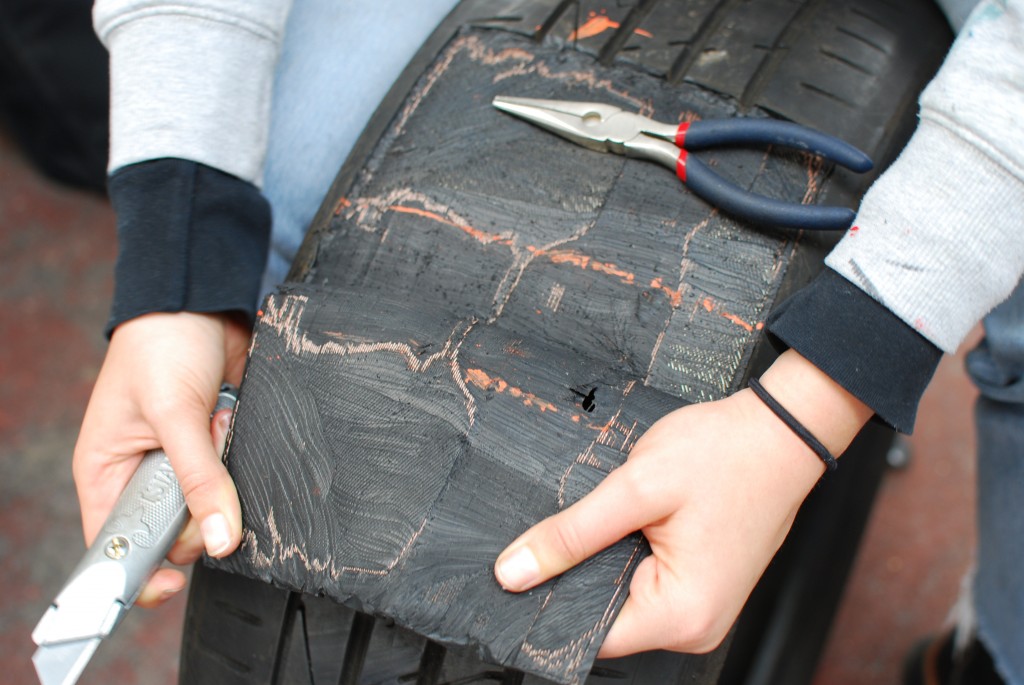
↑A skinned tyre. Note incorrect PPE.

↑The final material - each length took at least an hour.
The other material we used was leather, generously provided by Bill Amberg Studio, a leather-workers based in Park Royal. Every piece we used was an off-cut from another of their projects.
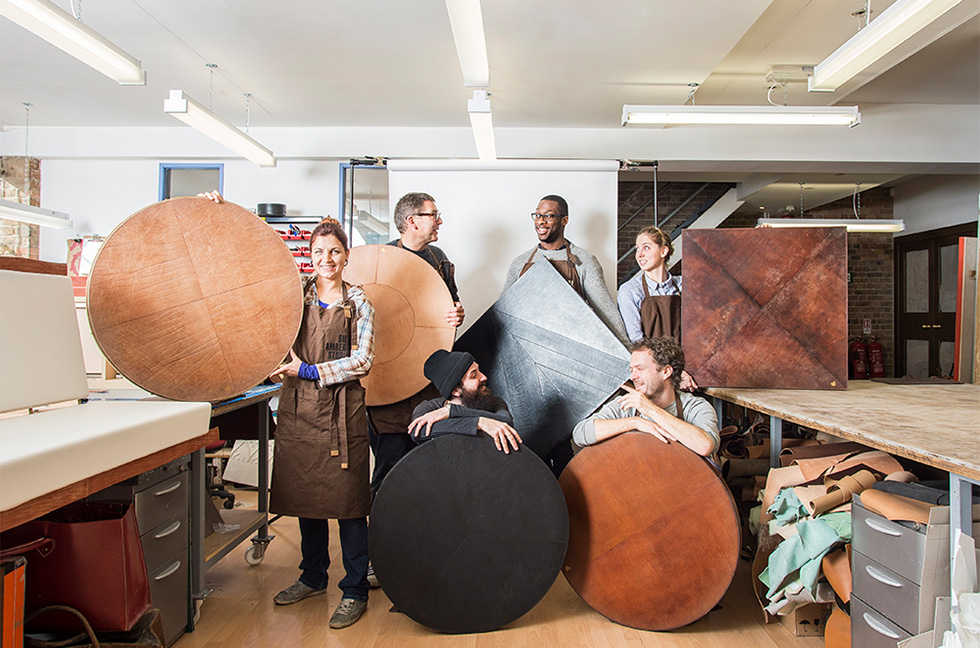
↑Bill Amberg studio.
(Is leather sustainable? It’s a by-product of the meat industry, and has been tanned with vegetables for over 300,000 years. So for as long as people eat cows and pigs, there’ll be leather to spare.)
The workshops were led by the talented Lauren MacDonald. Over four sessions, she helped the young people learn how to put these two things together.
Bill Amberg also provided us the space to meet in real life. After doing A4 Paper online, it felt so good and human just to be in the same space.

↑Our young people working together in Bill Amberg's workshops, after a year of working in our own homes. Real Life is amazing.
Lauren started by creating a prototype, and sharing some inspiration with the young people. She took them through the process of creating their own individual designs. Over four weekly sessions, they:
→ Learnt to skin the tyre (a health and safety nightmare)

↑Lauren demonstrating how to skin the tyre safely.

↑More tyre skinning. Note correct PPE.
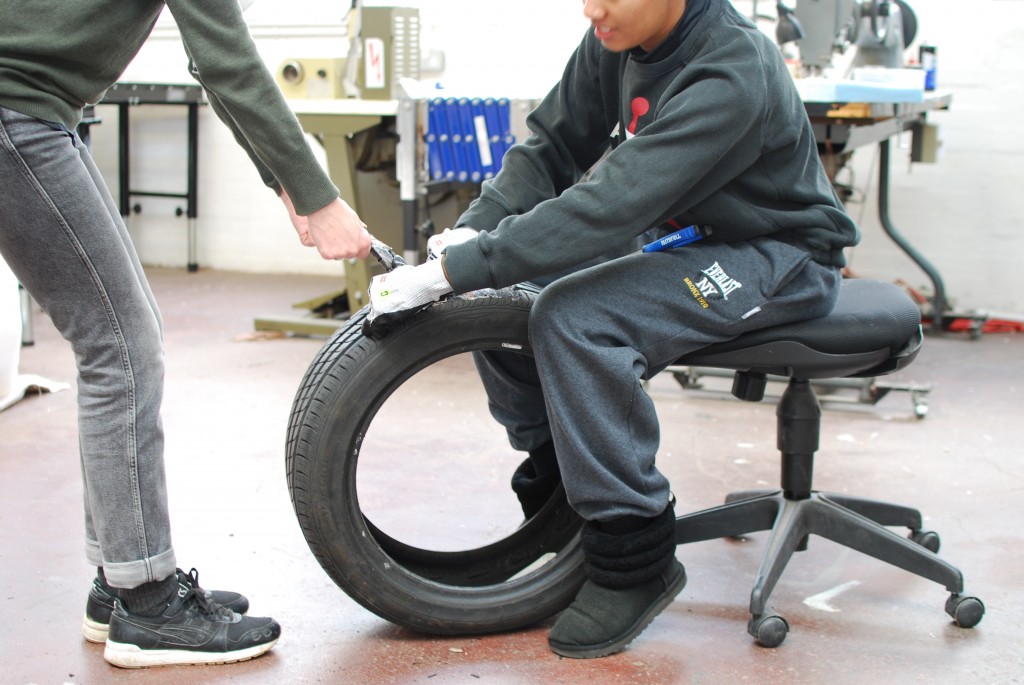
↑The two person method - one to hold, the other to slice. Always concentrate on the knife.
→ Worked out and drew up their designs. (The young people had free rein to design their own sandal/shoe).
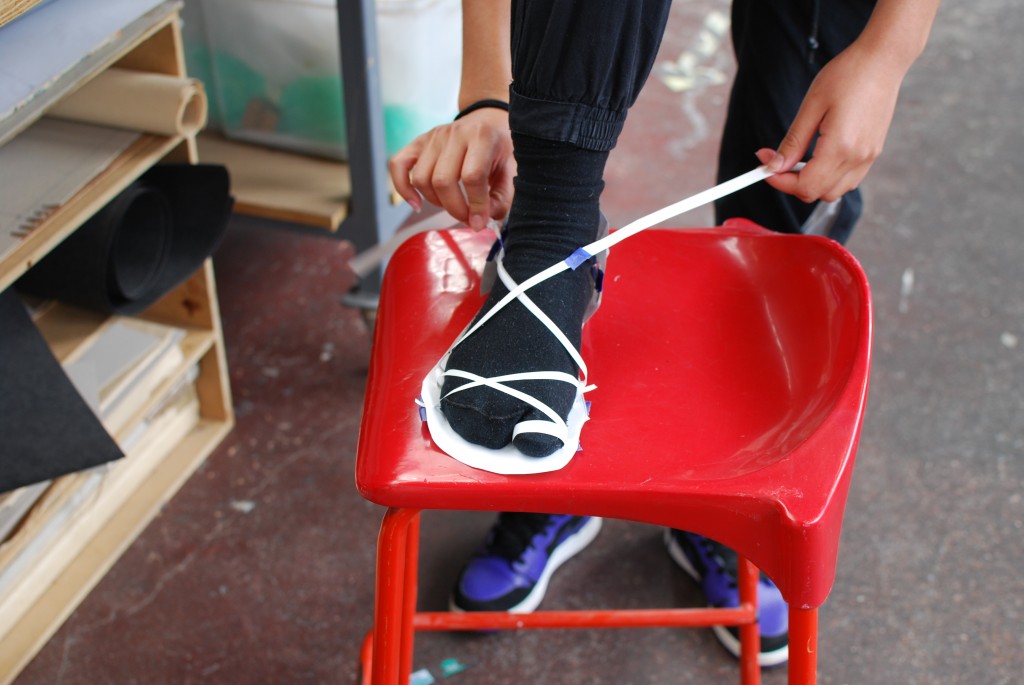
↑The young people make paper templates for their sandal design. This one is complicated.

↑A simpler paper template.

↑Some Roman vibes here.
→ Cut their leather.

↑Leather cut out and ready to weave together.
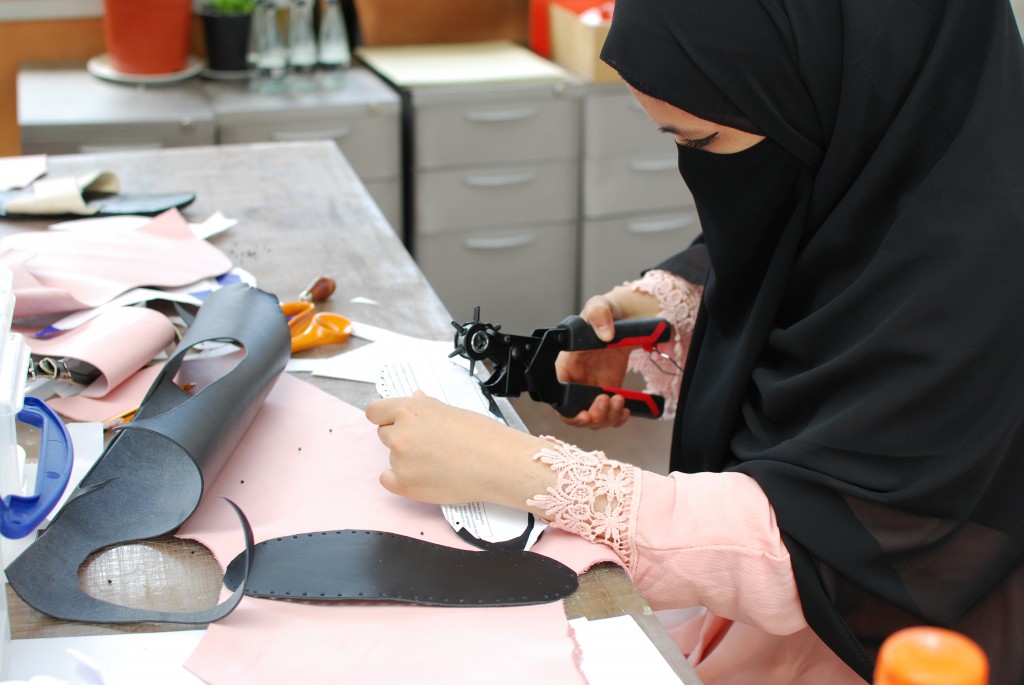
↑Punching holes with the super satisfying punches.

↑A busy day in the workshop - cutting out the patterns.
→ Positioned their straps, stuck them down, and ‘skived’ the edges

↑The young people lay their straps over their feet, and get the positioning right.

↑A beginners 'skives' their shoe. The term 'skiving off' comes from leather working - taking a little bit off the edges.

↑More strap work.
→ Cut the tyre and punched their holes

↑Punching holes in the tyre material. This was hard work.

↑Marking the holes to punch.
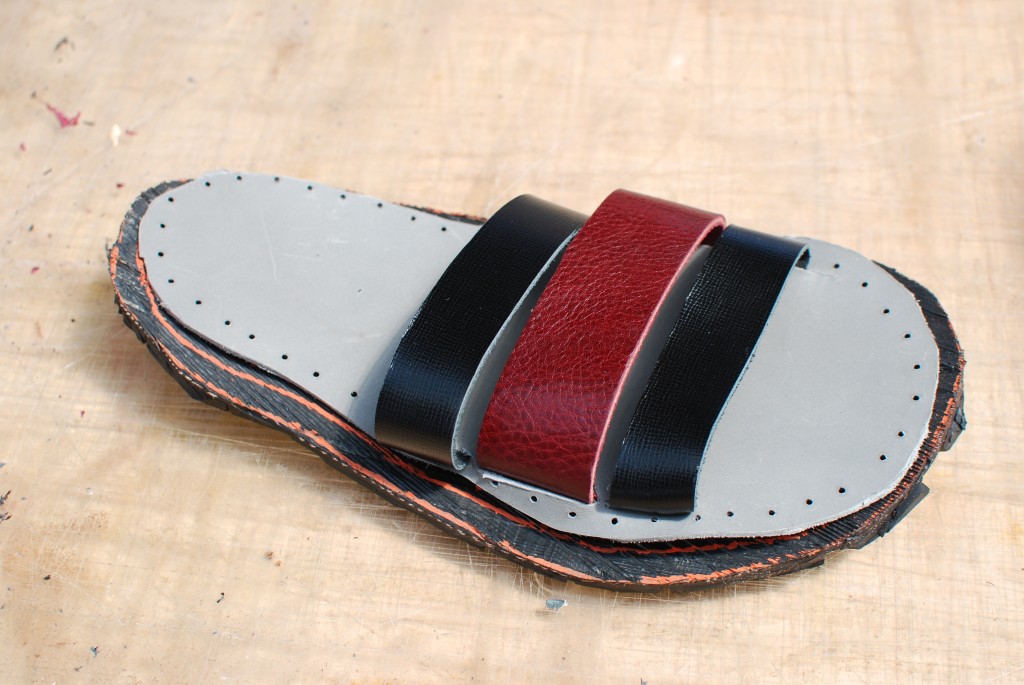
↑Assembling the sections.

↑Absolute Beginners at work.
→ Sewed the pieces together with waxed linen thread (a low-tech solution which dispensed with the need for higher-tech synthetic glues).
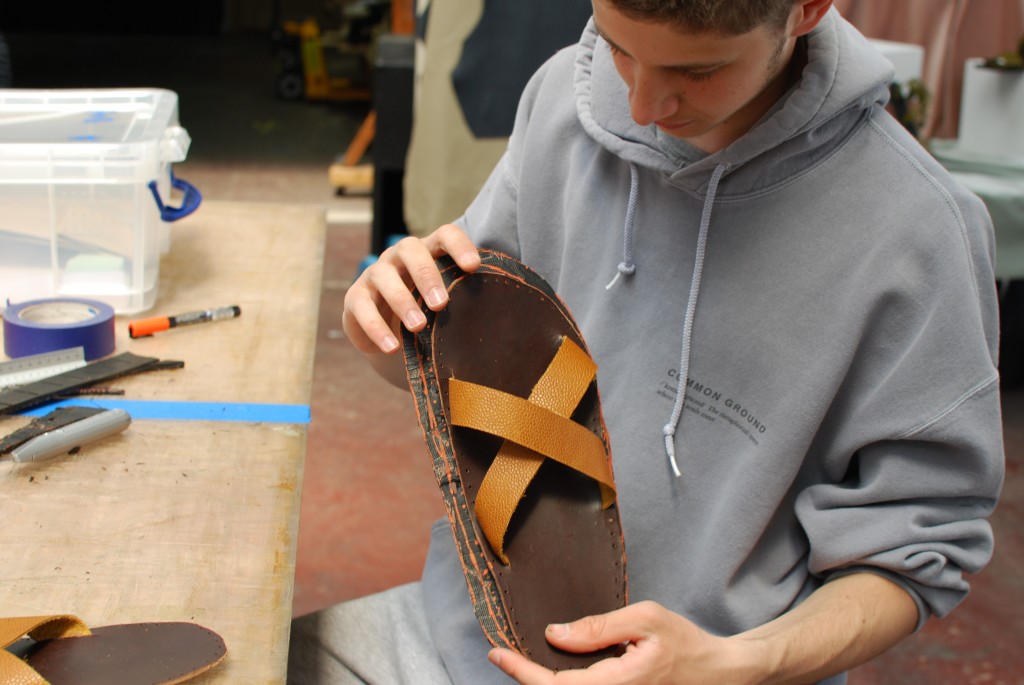
↑Assembling the sandals.

↑Sewing the soles to the uppers.

↑Everything coming together.
→ Presented their sandals in a photoshoot, in the factory itself.
It’s important to say here that this was down to the wire. The young people were punching and sewing right up to the end of the last workshop, then hurriedly pulling the sandals on for the photoshoot. This was mostly because skinning the tyre took MUCH longer than we thought it would. It was also probably a little too ambitious for four weeks.
We wanted to spend some time talking about the wider issues of consumerism, and the impact it has, and how it felt to make these things. But we just had to concentrate on making.
(But that’s OK, right? This is the interesting thing about making things by hand/off-grid. It takes ages. If we’d have priced the sandals by the time spent making each one, they’d each have been hundreds of pounds).
This is what their sandals looked like:

↑Photoshoot number one - Kaye's finished sandals.

↑Photoshoot number two - Maki's sliders (based on Bill Amberg's own pair of Thousand Milers).

↑Photoshoot number three - Alice's design.

↑Photoshoot number 4 - Sahara's finished sandal.

↑Photoshoot number 5 - Alice's design with sock.
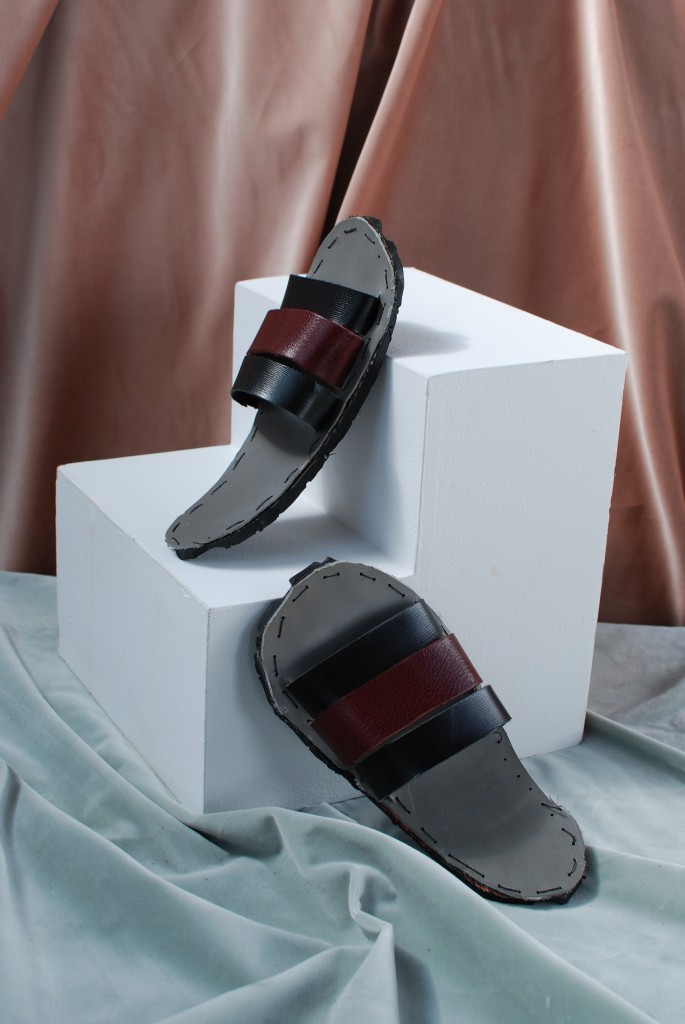
↑Photoshoot number 6 - Josh's finished sliders.
We then brought the young people back together for three more production workshops, to actually make some A-B sandals to sell. We chose Maki’s design, as it was the simplest, the most unisex (for crossover appeal) and involved the least cuts.
Over three days of production the young people made 14 pairs of wildly beautiful, recycled and off-grid sandals – testament to how long it takes to skin a tyre.

↑The final Royal Maki sandals, propped up on a breeze block.

↑The official advertising image of the Royal Maki Sandal.
ROYAL MAKI SANDALS are
→ 100% RECYCLED
→ 100% HANDMADE
→ 100% OFF-GRID
They were named by Sahara Fagan-Michaelson.
Thanks so much to everyone at Bill Amberg Studio.
CREDITS:
Workshop Leader → Lauren MacDonald.
Absolute Beginners → Alice, Emma, Kaye, Josh, Maki, Rob and Sahara.
Youth Engagement → Cam Jarvis.
Date → May/June 2021.